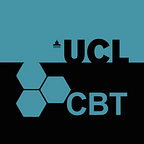DLT & Land Registry White Paper
UCL CBT has co-authored a white paper with HM Land Registry and Mishcon de Reya on applications of DLT to Land Registry. The white paper is based on the recent proof of concept project developed by HM Land Registry Digital Street project together with consortium of partners.
Background
Real estate market is one of the most significant pillars of British economy and major source of foreign investment into the country. However, if you have ever bought or sold a property in the UK, you will know that the process of buying or selling the property is extremely complicated and slow. To change this and to achieve their goal to become the world’s leading land registry for speed, simplicity and an open approach to data, HM Land Registry launched Digital Street research project. The project explores how technology can be used to make processes such as buying and selling property simpler and more convenient for all parties involved in the transaction.
Blockchain and DLT are one of the most promising technologies explored as part of the project because of their potential to improve information sharing and validation process between the parties involved in real estate transaction. For example, by improving the speed of information sharing between the parties, blockchain may reduce the time it takes for real estate transactions to complete, in turn increasing volumes and making possible new business models. Also, by improving the integrity of information shared between the parties, blockchain may improve the calculation of counterparty risks and better inform the price discovery process.
Project Overview
A simplified data flow as part of a conveyance process
This year HM Land Registry launched first proof of concept project which utilises DLT. In collaboration with leading conveyancing firms Mishcon de Reya and MyHomeMove, payment intermediary Shieldpay, digital identity provider Yoti and HM Revenue & Customs the blockchain based proof of concept was developed which enables a digital transfer of the property that automatically updates the Land Register.
The sale of a semi-detached house in Gillingham, Kent, was used as a case study to explore how blockchain can be used to optimise the process. The conveyancing process was identified as one of the major pain-points. For this particular transaction, the conveyancing process had taken 22 weeks to complete against an initial estimate of 6 weeks.
The term conveyance refers to the legal process of transferring property from one owner to another, this process is currently very slow (on average between 10 and 12 weeks) and expensive, because the manual, repetitive and duplicative nature of many steps involved in the process contribute to expensive legal fees, combined with costly searches and surveys. Also, currently, each conveyance operates in a siloed manner to the others in the chain, with no ‘single point of truth’ that can reveal the state of the whole chain at any time.
To solve this issue the HM Land Registry together with technology and legal partners developed solution which utilises Corda DLT protocol, developed by R3 consortium, to digitalise and streamline the conveyancing process. Various transaction participants where established as nodes on the blockchain network, each of which were able to execute smart contracts pertaining to their role in the transaction to enact changes on the ledger. HM Land Registry retained an important role in the process by providing the single source of truth for the network nodes to rely on when determining land title ownership.
By deploying the DLT based solution to the same transaction for sale of the semi-detached house in Gillingham, Kent, it was possible to bring the transaction time down from 22 weeks to less than 10 minutes.
White Paper
Following the success of the project, HM Land Registry collaborated with Mishcon de Reya and UCL CBT on the white paper, which explains in detail the process of developing the DLT based platform for the conveyancing process, the challenges real estate industry is facing at the moment and how blockchain and DLT technologies can be used to solve these issues.
In the paper you will find the detailed overview of the proof of concept conducted, from user journey mapping and legal consultations to platform development. You will also learn how blockchain technology can be combined with Internet of Things (IoT) and other frontier technologies to solve some of the most pressing issues facing real estate industry at the moment.
The white paper also provides suggestions for DLT use cases in real estate market which go beyond the buying and selling of real estate. The use cases which are explored include, construction supply chain, real estate investment and tokenisation, property maintenance, monitoring of property environmental footprint and much more.
The paper also explores in depth the challenges for DLT adoption in the real estate market, with specific focus on legal and regulatory barriers as well as technical complexities of implementing such novel technology in the industry which for years relied on paper based documentation and legacy technology. Lack of awareness in the market about potential capabilities of the DLT is explored as well, with the focus on negative image of blockchain and DLT in the eyes of wider population because of recent massive failings of cryptocurrency projects and so called “ICO boom”.
To learn more about the project and to download the white paper, please follow this link.
